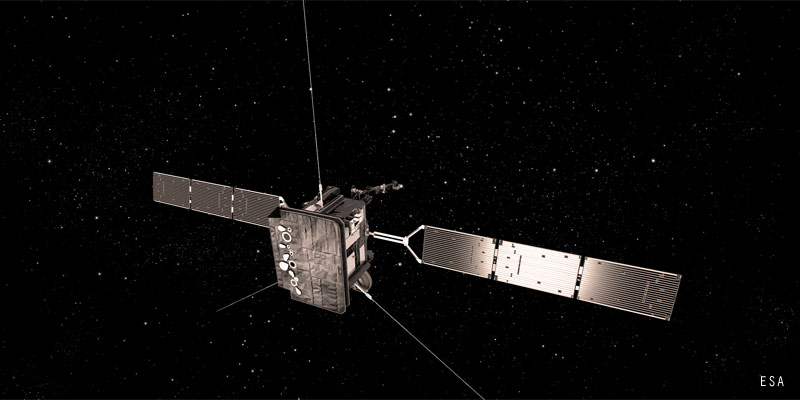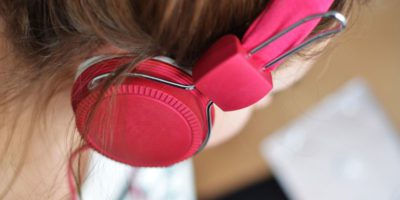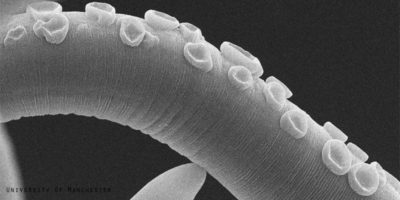Katie Hassell works as a spacecraft thermal engineer at Airbus Defence & Space. She has a B.Sc. in Physics from the University of Warwick and an M.Sc. in Aerospace Engineering from Brunel University. Her work centres around predicting the temperatures of the various parts of spacecraft during all phases of their lifetime.
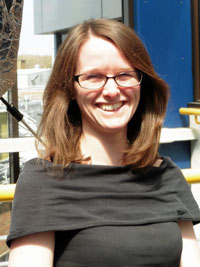
Katie spoke at the London Soapbox Science event, which took place on Saturday 28th May 2016 between 2pm – 5pm on London’s South Bank, (Queen’s Stone, Riverside Walkway – by Gabriel’s Wharf), London, SE1 9PP. She spoke about: “Keeping space cool (but not too cold).”
Physics – so varied, and you can study anything and everything. What’s not to like?
My career to date has been fairly varied, mainly because it took me a long time to work out what I like and what I wanted from a job. I chose to study physics because it’s so varied and you can study anything and everything, what’s not to like?
With a degree in physics, according to a lot of careers advice, you can do “anything”; only what does “anything” include? It’s probably easier to count the things it doesn’t include, but beyond being a research scientist or a teacher, I didn’t have a clue.
After a lot of searching, I found a role in a patent office; that was so interesting and it was great to use my understanding of physics and then turn it into something else. My internship came to an end and it’s a hard industry to get into, which lead me into the classic field of temporary work. That’s where I started on the local authority roles: receptionist, PA, paralegal and then to information governance in social care.
I found I was missing physics, it’s hard to be involved in science at home on your own. At that point, I made a list of the skills I’d learnt from the different jobs I’d had, scored them by what I liked and what I didn’t to work out what was important for me in a job and then started looking at my interests: what did I want to apply those skills to? There was really only one option: space.
Realising spacecraft engineering was what I was searching for
I started looking for jobs that weren’t research science, supported astrophysics, is technical, requires teamwork, is creative and innovate. In short, I was looking for spacecraft engineering. I don’t think I’d ever really considered what engineering involved and nobody had ever told me; I could’ve saved myself a lot of time, but I wouldn’t have learnt so many different skills or just how important physics is to me.
From there, I relocated back to Yorkshire (read: I moved back in with Mum and Dad), to save money to go back to university; funded by a job in corporate governance for a housing association. One job application and a 12 month full time post-graduate Masters in Aerospace Engineering later, I was on the Astrium Graduate Programme. As a company we’ve had a restructure and rename and are now Airbus Defence & Space, but my job hasn’t changed.
I have had a really wide variety of experiences here and I’ve worked on a range of projects. My first project was a telecoms mission, so someone is watching TV through a part of a satellite I helped design. I then moved to the science projects.
I supported EarthCARE [a satellite mission] by doing a big review with our customer the European Space Agency (ESA); I was so excited when I walked past a clean room and saw one of the panels I’d been designing actually built and having the heaters fit, it’s a bit surreal.
I then joined the Solar Orbiter [European Space Agency mission] team, it’s such a fast paced mission, I got to work a lot with the instrument teams and it’s also related to my final year project in my physics degree so it’s interesting seeing how that science is going to progress. I’ve been leading the analysis for a potential new project called PLATO, which will look for Earth-like planets around other stars.
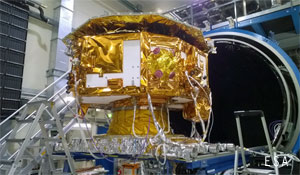
Alongside that, I’ve been working on LISA Pathfinder [a European Space Agency spacecraft], I got to go on my first thermal test and I also have a science mission in space. Most recently I’ve been supporting Biomass [a European Space Agency satellite], which we’ve just signed the contract for to work on. Of course, I’m also a STEM Ambassador!
Looking for things getting too hot or too cold on the spacecraft – and then finding ways to solve these problems
Specifically, I’m an analyst. I use computer models to predict the temperatures of the various parts of the spacecraft during all phases of its lifetime. I’m looking for things that are getting too hot or too cold. Then I’ll start looking at ways of controlling their temperature; usually painting something black or white, wrapping something in blankets, unwrapping a bit of blanket (we call that a radiator) or adding a heater.
To find out what counts as “too hot” or “too cold”, I will work with lots of different people, to understand what their item needs: e.g. the structures can manage -50oC to +50oC, but star trackers work around 20oC and need to be kept within 3oC hotter or colder of that. I also need to understand what the spacecraft will be doing: once it’s in space they’re not just “on” all the time, there are times when we need to check how everything is working; so again, I’ll be talking to different people to understand how the spacecraft will be used. I get to work with a lot of people.
Once I have all the information I need; I then start thinking about how I’m going to turn that into something that the software can run. The models can take a long time to run, sometimes up to a week, so it makes sense to try and combine different scenarios if possible. At that point, I’m usually doodling on bits of paper trying to visualise the different options before I start plugging things into the model: a good plan goes a long way. My job is really creative and I get to work out the best way of finding out how the spacecraft will look thermally and also get to work on how to control the temperatures.
Controlling heat flow all the way up there in space – it’s certainly a challenge
My Soapbox Science talk is “Keeping space cool (but not too cold)”; so it’s all about my job. I think we all understand the concepts of “too hot” and “too cold”, so then the question looks like “what is the right temperature”? The next layer is how heat moves around and on to how we can control the heat flow. Add to that where the heat comes from and goes to and you have thermal engineering. The principles that it’s all based on aren’t the difficult bit, it’s adding all the different sections together: it’s a compromise and a balancing act.
Personally, I like to work with examples and I’m also a fan of having a go at things; so I’m looking at different ways of making things interactive. As an example: spacecraft gain a lot of heat from the Sun, we can run endless models and look at the numbers to work out what’s going on, but a quick way of working out which things are sunlit and which bits aren’t is to pretend you’re the Sun and wave a suitable box around in just the right way. That works well for me at my desk, so I’m looking at ways of making that work for a crowd.
Inflatable planets, woolly spacecraft and some ‘willing volunteers’
To prepare for my talk I’ve made a big list of all the things that I do at work; it seemed like a good starting point. I’m working through the list to decide what is essential and what is just nice to have. I’m also looking at things that I can turn into something visual; computer based analysis is great for producing graphs and pictures of temperatures, but I’ll not having anything like that with me at Soapbox!
I’m definitely going to be incorporating the waving-around-a-box-in-just-right-way technique, I’ve found some inflatable planets and the crotchet hooks are out and I have a lot of wool: woolly spacecraft on the way.
The main thing I’m doing is practising: it turns out that my job is really varied, so I’m practising the different ideas that I come up with to see what works, what might work if people are interested enough and what doesn’t work. It’s easy to understand what you’re talking about if you do it every day, but someone new to the ideas might not get it; so I’ve also got a few “willing volunteers” that I can try things out on too.
Igniting a spark and getting parents up-to-speed on the amazing job opportunities in science is so important
All opportunities for people to engage with science and engineering are important, but Soapbox Science is really different from the more typical school visits and museum activities: it’s why I applied to take part!
In a school, the class has to be there and we already have an idea of what someone will know before we get there. In a museum, the people visiting are there because they’re interested. Soapbox Science is both exciting and daunting because we’re reaching out to anyone and everyone; whatever their educational background and whatever their current interests are.
It does mean that we can present an idea, give people a spark for something they perhaps didn’t have before. I’m hoping we have families visiting; it’s quite one thing for a child to come home from school saying “I want to be a spacecraft engineer when I grow up”, but if the parents aren’t aware of what it takes, what type of people do it (that’s everyone and anyone by the way) and that it is a real option, it’s hard to keep that motivation going and to find the right path. Soapbox Science is a way for us to reach people we wouldn’t normally. The speakers are all specialists in the subjects they’re talking about; which makes for great role models.
Showing people what a job in space science actually looks like and maximising the Tim Peake effect
Tim Peake’s mission has been a great advertisement and there are so many things going on related to it. Having people interested is a great start, so loads of organisations (Airbus Defence & Space included) are using peoples’ interest to show what a job in science and engineering actually looks like. Showing people, particularly girls and those that don’t fall into “middle-class, white male” categories, that science and engineering is for them too is one way that we can start to encourage more people into Physics and Maths A-level. Science and maths don’t have a gender, that is something society has imposed; there is nothing to say that anyone can’t do anything they set their mind to.
Alongside the view of “middle-class, white male” science, there’s this view that physics and maths are hard. I’m not going to lie, they are hard. However, other subjects are hard too, look at music and acting; I wouldn’t say they’re any easier, they’re just different. Physics and maths offer different insights into the world, into the universe. I’d be really impressed if someone couldn’t find something that they found interesting in maths or physics: it turns out that the universe and everything in it are incredible!
There is no such thing as “this is what an engineer looks like’” anymore
There are so many types of engineering, there are so many different qualities to being an engineer, so it follows that there are all sorts of different people being engineers; there is no single “this is what an engineer looks like”.
I would also add: you don’t have to know what you want to do. If you don’t know what you want to do, go with what you like and go with your instinct for what feels right, you’d be surprised how often that works out. Your first job is unlikely to be your last job too, you’ll always gain from any experience; even if that is the knowledge “I really don’t want to do that”.
You should follow your instincts and be yourself.
Spacecraft aren’t cheap, they only go up once and it’s not like we can put them in a garage for repairs
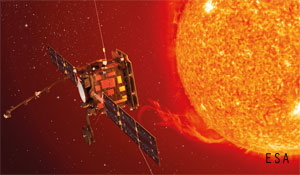
I’ve been supporting Biomass and Solar Orbiter recently, it was great to see the contract for Biomass being signed earlier this month, that’s going to be big project for us. I am moving on to leading the thermal analysis on another project; it’s a part of a spacecraft that has been for thermal test and I’m going to be taking the temperatures measured during the test and making sure that I can recreate that on the computer model.
Once that works, I’ll then be using the model to predict what happens once the spacecraft is in space; it’s our way of making sure that the design is going to work and to see if we might need to change anything. We can only send them up once, spacecraft aren’t cheap and it’s not like we can put them back in a garage to repair them, so we have to get it right before it’s launched. Along with being a STEM Ambassador of course!
We’ve got our STEM Centre being opened this year at Stevenage. It’s going to be an interactive education centre that has a glass wall adjoining the Mars Yard [rover test area], so you’ll be able to see the Mars rovers in action.
https://airbusdefenceandspace.com/
https://twitter.com/khassellspace
https://www.linkedin.com/company/airbus-defence-and-space
https://www.youtube.com/user/airbusds

